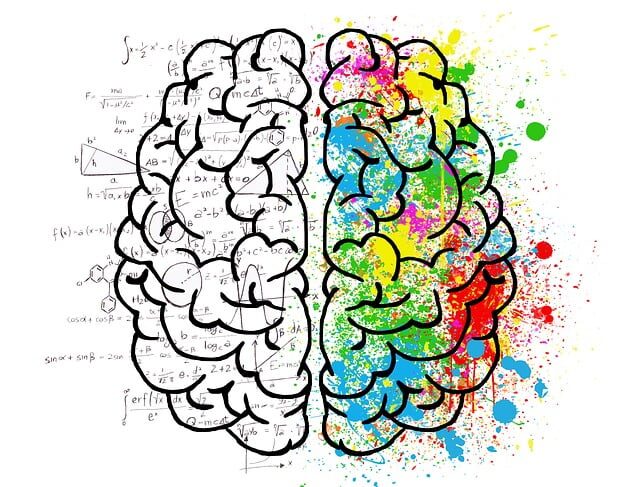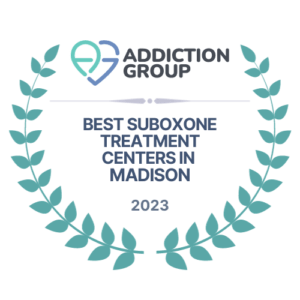Over the past few decades, the opioid epidemic has wreaked havoc on communities across the globe. The opioid crisis has taken a tremendous toll on society, causing a substantial rise in fatalities due to overdoses, overburdening healthcare infrastructure, and triggering far-reaching socio economic ramifications. Data from the Centers for Disease Control and Prevention (CDC) reveals that, on average, 130 Americans lose their lives daily as a result of opioid-induced overdoses. Beyond the devastating loss of life, the opioid crisis has also had a profound impact on families, communities, and the economy.
In order to effectively combat the opioid epidemic, it is crucial to understand the underlying causes of opioid addiction and the risk factors that contribute to it. Healthcare professionals, policymakers, and communities can develop targeted prevention and intervention strategies that address the root causes of the problem by identifying these elements. Furthermore, raising awareness about the science behind opioid addiction can help reduce the stigma associated with it, encouraging more people to seek help and support.
In this article, we will dive into the science behind opioid addiction, exploring the causes, risk factors, and prevention strategies that can help combat this growing crisis. By the end of this article, you will have a better understanding of the complex nature of opioid addiction and what can be done to address it at both individual and societal levels.


What are Opioids?
Opioids represent a category of substances that originate from the opium poppy plant or are artificially produced to replicate the impact of organic opiates. They are primarily used for their pain-relieving properties, which results from their ability to bind to opioid receptors in the brain and spinal cord. When used appropriately and under medical supervision, opioids can provide significant relief for people suffering from acute or chronic pain. However, when misused, opioids can lead to addiction and a host of adverse side effects.
Different Types of Opioids
1. Prescription Opioids
Prescription opioids are medications prescribed by healthcare professionals to manage moderate to severe pain. Frequently prescribed opioids encompass medications such as oxycodone (found in OxyContin), hydrocodone (present in Vicodin), morphine, and codeine. While these medications can be highly effective in managing pain when used as directed, they also carry a risk of addiction, particularly when misused or taken in higher doses than prescribed.
2. Synthetic opioids
Synthetic opioids refer to substances created by humans to replicate the influence of naturally occurring opioids. They are often more potent than their natural counterparts, increasing the risk of overdose and addiction. One of the most well-known synthetic opioids is fentanyl, which is 50 to 100 times more potent than morphine. Fentanyl and its analogs are often added to other drugs, such as heroin, to increase their potency, leading to a higher risk of overdose.
3. Illegal Opioids
Illegal opioids are substances that are not legally available for medical use and are typically obtained through illicit means. The most notorious illegal opioid is heroin, a highly addictive drug derived from morphine. Heroin use carries significant risks, including addiction, overdose, and the transmission of infectious diseases through shared needles.
How Opioids Work in the Brain
Opioids produce their impact on the brain through interaction with specialized receptors called opioid receptors, found extensively within the central nervous system. When opioids bind to these receptors, they activate a series of chemical processes that ultimately lead to a decrease in pain reception and an increase in feelings of pleasure and reward.
The activation of opioid receptors also triggers the release of dopamine, a neurotransmitter associated with the brain’s reward system. This release of dopamine reinforces the pleasurable effects of opioids, leading to a heightened desire to continue using the drug. Over time, the brain can become accustomed to the increased levels of dopamine, leading to tolerance, dependence, and eventually addiction. As the individual continues to use opioids, the brain requires increasing amounts of the drug to achieve the same pleasurable effects, perpetuating the cycle of addiction.
The Science Behind Opioid Addiction
Opioid addiction is a complex neurological phenomenon that can have life-altering consequences for those affected by it. To fully comprehend this issue and develop effective interventions, it is essential to delve into the science behind opioid addiction.
Opioid Receptors and the Brain’s Reward System
As mentioned earlier, opioids exert their effects by binding to opioid receptors in the brain and spinal cord. These receptors, in turn, are closely linked to the brain’s reward system, a complex circuitry that governs feelings of pleasure and motivation. When opioids bind to the receptors, they trigger the release of dopamine, a neurotransmitter that plays a crucial role in the experience of reward and pleasure.
The surge of dopamine in response to opioid use reinforces the desire to continue using the drug, as the brain seeks to recreate the pleasurable sensations associated with its consumptions. Over time, this reinforcement process can lead to the development of compulsive drug-seeking behaviors, as the individual becomes increasingly focused on obtaining and using opioids to achieve the desired effects.
Tolerance, Dependence, and Addiction
Tolerance is a natural phenomenon that occurs when the brain becomes less responsive to the effects of opioid over time. As a result, the individual requires increasing amounts of the drug to achieve the same level of pain relief or euphoria. Tolerance can develop rapidly, particularly in the case of potent synthetic opioids like fentanyl.
Dependence occurs when the brain becomes reliant on the presence of opioids to function normally. At this stage, the individual may experience withdrawal symptoms, such as nausea, vomiting, muscle aches, and anxiety, when they stop using the drug or significantly reduce their dosage.
Addiction manifests as a persistent, recurring condition marked by an uncontrollable urge to seek out drugs and maintain usage, even when faced with adverse outcomes. It is the result of a combination of factors, including genetic predisposition, environmental influences, and repeated exposure to opioids, which lead to long-lasting changes in the brain’s reward circuitry and other neural systems.
Neurological Changes Caused by Opioid Use
Chronic opioid use can result in a variety of neurological changes that contribute to the development and maintenance of addiction. These changes include alterations in the brain’s reward system, as well as disruptions in other neural pathways involved in learning, memory, and impulse control.
One of the key changes that occur with prolonged opioid use is a decrease in the sensitivity in the brain’s reward system. This diminished sensitivity makes it harder for the individual to experience pleasure from natural rewards, such as social interactions or enjoyable activities, further reinforcing their dependence on opioids to achieve a sense of well-being.
Long-term opioid use can also impair the brain’s ability to regulate stress and emotions, making it more challenging for the individual to cope with everyday stressors without resorting to drug use. These and other neurological changes contribute to the persistence of addiction and increase the risk of relapse, even after prolonged periods of abstinence.
Causes of Opioid Addiction
Opioid addiction is a multifaceted issue, influenced by a range of interconnected factors that can vary from person to person. Understanding the root causes of opioid addiction is critical to developing targeted interventions and support systems for those at risk.
Genetic Factors
Research has shown that genetics play a significant role in the development of opioid addiction. Studies of family, twin, and adoption histories have demonstrated that the risk of developing addiction can be partially attributed to genetic factors. While no single “addiction gene” has been identified, multiple genes are believed to influence an individual’s vulnerability to addiction. These genetic variations can affect how the brain processes opioids and other substances, as well as how it responds to stress, reward, and other environmental factors.
Environmental Factors
The environment in which an individual grows and lives can significantly shape their susceptibility to opioid addiction. Factors such as social influences, availability and access to opioids, and cultural norms can all impact a person’s likelihood of engaging in opioid misuse.
Social Influences
Social influences can have a profound impact on an individual’s likelihood of developing opioid addiction. Peer pressure, exposure to drug use within social circles, and the normalization of substance abuse can all contribute to an individual’s decision to try opioids. Additionally, the presence of strong family and community support systems can serve as protective factors against addiction.
Availability and Access to Opioids
The widespread availability of opioids, both through legal and illegal channels, has played a crucial role in fueling the opioid epidemic. Overprescribing of opioid medications, aggressive marketing tactics by pharmaceutical companies, and the ease of obtaining illicit opioids like heroin have all contributed to increased access to these drugs, leading to higher rates of misuse and addiction.
Psychological Factors
The interplay between psychological factors and opioid addiction cannot be overlooked. Emotional pain, trauma, and mental health conditions can all contribute to an individual’s vulnerability to opioid misuse and addiction.
Emotion Pain and Trauma
Individuals who have experienced emotional pain and trauma, such as childhood abuse, neglect, or the loss of a loved one, may be at a higher risk of developing opioid addiction. Using opioids to self-medicate and cope with emotional distress can lead to a dangerous cycle of dependence and addiction.
Mental Health Conditions
Mental health conditions, such as depression, anxiety, and post-traumatic stress disorder (PTSD), are also closely linked to opioid addiction. Those with mental health disorders may be more susceptible to opioid misuse as a way of managing their symptoms. Opioid use can also exacerbate existing mental health conditions or contribute to the development of new ones, further entrenching the cycle of addiction.


Risk Factors for Opioid Addiction
Recognizing the risk factors for opioid addiction is crucial in order to develop effective prevention strategies and provide targeted support for those at higher risk. Risk factors can be broadly categorized into demographic, medical, and behavioral factors, each playing a distinct role in shaping an individual’s vulnerability to opioid misuse and addiction.
Demographic Risk Factors
Demographic factors can play a significant role in determining an individual’s risk of opioid addiction. By examining these demographic risk factors, we can better understand how various population groups may be more susceptible to opioid misuse and addiction, and develop targeted prevention strategies accordingly:
- Age
- Gender
- Socioeconomic status
- Race
- Educational Level
- Housing Status
Medical Risk Factors
Medical risk factors are another essential component to consider when assessing an individual’s vulnerability to opioid addiction. By recognizing and addressing these medical risk factors, healthcare professionals can play a critical role in preventing opioid addiction and supporting those who are at higher risk:
- History of substance abuse
- Chronic pain conditions
- Mental health disorders
Behavioral Risk Factors
Behavioral risk factors can also contribute to an individual’s likelihood of developing opioid addiction. By understanding the behavioral factors that increase the risk of addiction, we can tailor prevention and intervention efforts to address these underlying issues and help individuals develop healthier coping strategies:
- Impulsive tendencies
- Sensation-seeking behavior
- Poor stress management
Prevention Strategies for Opioid Addiction
In the face of the opioid epidemic, it is vital to implement effective prevention strategies that address the root causes of opioid addiction and support those who are at risk. By focusing on education, monitoring, pain management alternatives, mental health support, and community involvement, we can build a comprehensive approach to curbing the spread of opioid addiction.
Education and Awareness Campaigns
Education and awareness campaigns play a crucial role in preventing opioid addiction by providing accurate information about the risks associated with opioid use and promoting safe prescribing practices. These campaigns can target healthcare professionals, patients, and the general public, with the aim of dispelling myths and misconceptions about opioids, highlighting the dangers of misuse, and emphasizing the importance of proper storage and disposal of prescription medications.
Prescription Monitoring Programs
Prescription monitoring programs (PMPs) are essential tools for preventing opioid addiction by tracking the prescribing and dispensing of controlled substances, including opioids. These programs help identify potential cases of overprescribing, doctor shopping, and other patterns of misuse, allowing healthcare professionals and regulatory authorities to take appropriate action and intervene before addiction takes hold.
Proper Pain Management Alternatives
The overreliance on opioids for pain management has contributed significantly to the opioid epidemic. By exploring and promoting proper pain management alternatives, we can help reduce the demand for opioids and prevent addiction.
1. Non-opioid Pain Relief Options
One of the key strategies for preventing opioid addiction is promoting the use of non-opioid relief options, such as over-the-counter analgesics, nonsteroidal anti-inflammatory drugs (NSAIDs), and other non-pharmacological treatments. We can reduce the reliance on opioids and minimize the risk of misuse and addiction by providing patients with effective alternatives for managing pain.
2. Integrative and Complementary Therapies
Integrative and complementary therapies, such as acupuncture, massage, and mindfulness-based stress reduction, can also play an essential role in preventing opioid addiction by offering alternative methods for managing pain and stress. These therapies can be used in conjunction with conventional treatments to create a comprehensive, holistic approach to pain management that minimizes the need for opioids.
Mental Health Support and Counseling
Mental health support and counseling are crucial components of opioid addiction prevention, as they help address the psychological factors that can contribute to addiction, such as emotional pain, trauma, and mental health disorders. We can reduce the likelihood of opioid misuse and addiction by providing individuals with the necessary tools and resources to cope with stress, manage emotions, and maintain mental well-being.
Community and Family Involvement
Community and family involvement can serve as a powerful protective factor against opioid addiction. Communities and families can help prevent opioid misuse and provide crucial support to those who are struggling with addiction or at risk of developing it by fostering strong social connections, providing safe and supportive environments, and promoting open dialogue about addiction. Involving community organizations, schools, and healthcare providers in prevention efforts can further strengthen the support network for this effect by opioid addiction.


Conclusion
It is important to know the complexities of opioid addiction, and emphasize the importance of multifaceted approaches to tackle its devastating effects on individuals and society. The goal is to empower people with knowledge and tools to make informed decisions and support those who may be struggling with addiction, by examining the science behind opioid addiction, its various causes, risk factors, and prevention strategies.
It is essential to recognize each person’s experience with opioids and addiction is unique, and addressing this epidemic demands the combined efforts of healthcare professionals, policymakers, families, and communities. Working together, we can enhance our understanding of the factors contributing to opioid addiction and develop effective strategies to combat its spread, ultimately fostering a safer, healthier environment for everyone.
Interested to learn more? Read more related articles: Men’s Issues in Addiction Recovery
References:
https://www.camh.ca/en/health-info/mental-illness-and-addiction-index/opioid-addiction
https://www.who.int/news-room/fact-sheets/detail/opioid-overdose
https://medlineplus.gov/genetics/condition/opioid-addiction/
https://www.cdc.gov/drugoverdose/featured-topics/evidence-based-strategies.html













